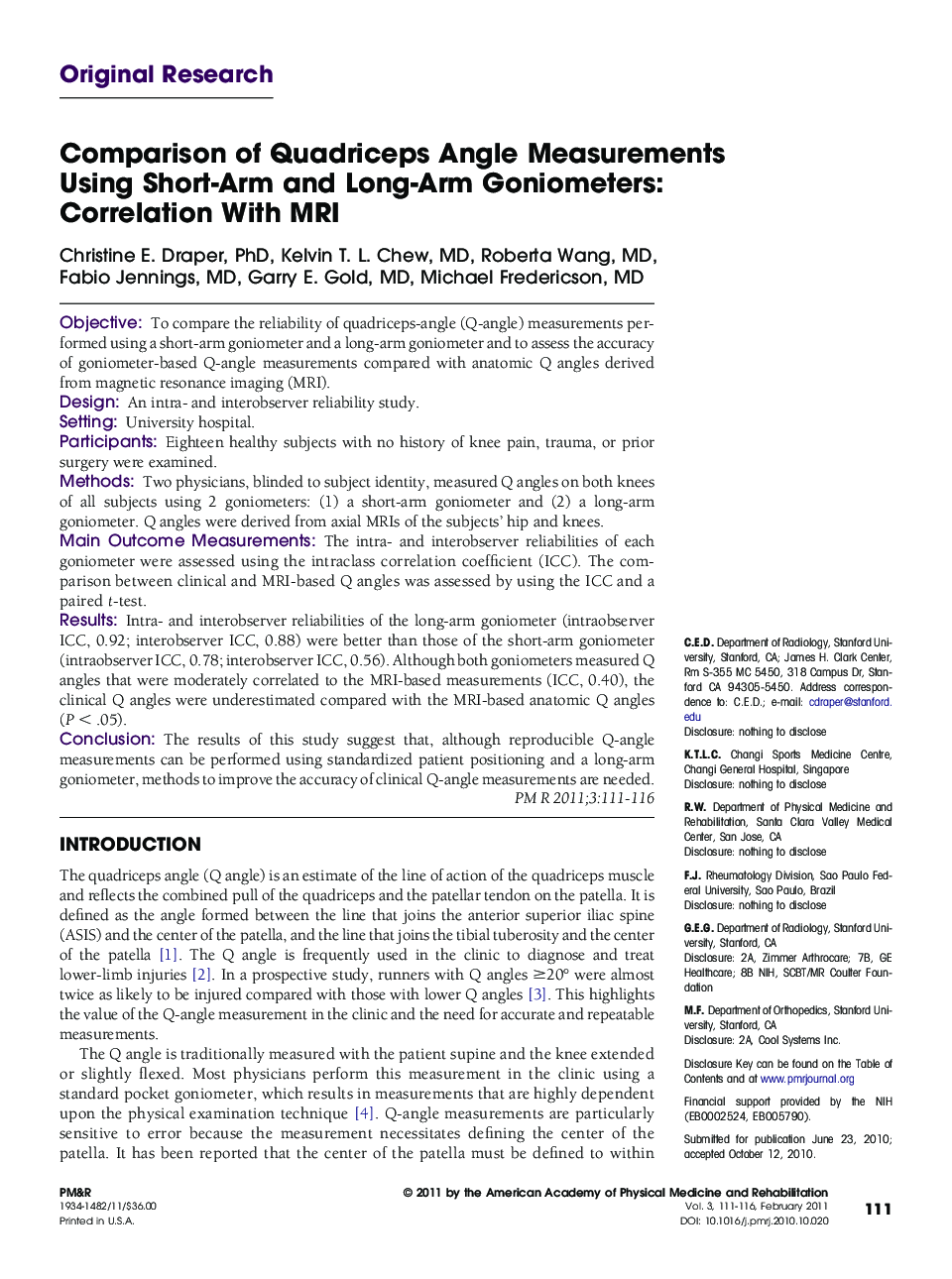| Article ID | Journal | Published Year | Pages | File Type |
|---|---|---|---|---|
| 2707835 | PM&R | 2011 | 6 Pages |
ObjectiveTo compare the reliability of quadriceps-angle (Q-angle) measurements performed using a short-arm goniometer and a long-arm goniometer and to assess the accuracy of goniometer-based Q-angle measurements compared with anatomic Q angles derived from magnetic resonance imaging (MRI).DesignAn intra- and interobserver reliability study.SettingUniversity hospital.ParticipantsEighteen healthy subjects with no history of knee pain, trauma, or prior surgery were examined.MethodsTwo physicians, blinded to subject identity, measured Q angles on both knees of all subjects using 2 goniometers: (1) a short-arm goniometer and (2) a long-arm goniometer. Q angles were derived from axial MRIs of the subjects' hip and knees.Main Outcome MeasurementsThe intra- and interobserver reliabilities of each goniometer were assessed using the intraclass correlation coefficient (ICC). The comparison between clinical and MRI-based Q angles was assessed by using the ICC and a paired t-test.ResultsIntra- and interobserver reliabilities of the long-arm goniometer (intraobserver ICC, 0.92; interobserver ICC, 0.88) were better than those of the short-arm goniometer (intraobserver ICC, 0.78; interobserver ICC, 0.56). Although both goniometers measured Q angles that were moderately correlated to the MRI-based measurements (ICC, 0.40), the clinical Q angles were underestimated compared with the MRI-based anatomic Q angles (P < .05).ConclusionThe results of this study suggest that, although reproducible Q-angle measurements can be performed using standardized patient positioning and a long-arm goniometer, methods to improve the accuracy of clinical Q-angle measurements are needed.
